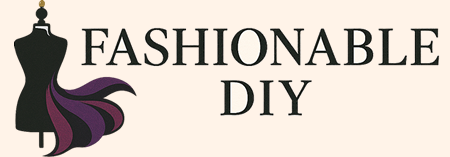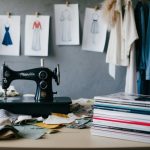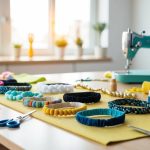DIY Fashion: Transform Thrift Store Finds into Chic Treasures
DIY Fashion on Social Media
Social media platforms offer excellent opportunities for showcasing DIY fashion creations and connecting with like-minded communities. Instagram and Pinterest are particularly popular for sharing upcycled thrift store finds and DIY fashion projects.
Showcasing Creations on Instagram
Instagram serves as a visual playground for DIY fashion enthusiasts. We can post before-and-after photos that highlight the transformation of thrift store items. Using hashtags like #UpcycledFashion and #ThriftStoreFinds increases visibility and attracts followers who share our interests.
Stories and Reels provide additional ways to engage audiences by offering behind-the-scenes glimpses of our creative process. Collaborating with fashion influencers can also help amplify our reach. Consistent posting and high-quality images are key to building a dedicated following.
Connecting with the Pinterest DIY Community
Pinterest is a hub for DIY inspiration and project ideas. We can create boards dedicated to different types of upcycling projects, such as turning old t-shirts into yarn or transforming dated dresses into modern outfits. Pinning our completed projects along with step-by-step guides can attract a community of DIY fashion lovers.
Engaging with others by repinning their content and leaving thoughtful comments builds our network. Pinterest’s search functionality allows us to discover new ideas and techniques. Creating visually appealing pins with clear instructions helps us stand out and contributes to a repository of sustainable fashion solutions.
The Impact of DIY Fashion on the Environment
DIY fashion transcends trends and offers tangible benefits for our planet. From reducing waste to promoting sustainable choices, it allows us to create unique pieces while being environmentally conscious.
Reducing Waste through Creativity
When we engage in DIY fashion, we significantly reduce the amount of textile waste that ends up in landfills. By transforming old garments into new treasures, we give a second life to materials that might otherwise be discarded. This not only cuts down on waste but also decreases the demand for new fabrics, conserving resources.
Using thrift store finds as our starting materials further enhances this positive impact. Instead of contributing to the cycle of fast fashion, we recycle existing clothing. This approach prevents the release of harmful pollutants that come from manufacturing new clothes. Through creativity, we turn potential waste into fashionable, personalized items that are both stylish and sustainable.
Promoting a Greener Wardrobe
Creating our own fashion pieces from thrifted items makes our wardrobes more sustainable. Each piece we upcycle is a step towards reducing the environmental footprint of the fashion industry. By choosing to wear and repurpose second-hand clothing, we lessen the need for mass-produced items, which often involve harmful production practices.
A greener wardrobe is not just about the clothes we wear but also the message we convey. It encourages others to adopt similar practices, spreading the importance of sustainability. As we combine style with responsibility, our choices resonate beyond our closets, inspiring a broader movement towards eco-friendly living. We make a positive impact, embracing sustainable fashion that is both unique and environmentally conscious.



